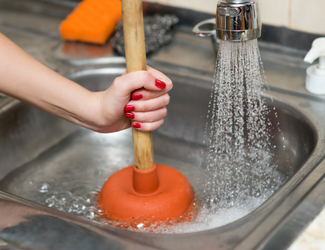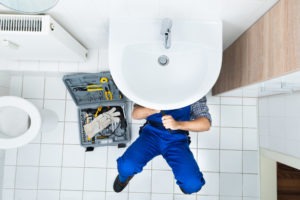Troubleshooting Plumbing Issues in Rental Properties: An Easy Guide
Troubleshooting Plumbing Issues in Rental Properties: An Easy Guide
Blog Article
Are you trying to find advice about Who is responsible for plumbing maintenance?

Taking care of plumbing problems in rental residential or commercial properties effectively is crucial for preserving lessee fulfillment and maintaining the home's worth. Whether you're a landlord or a residential property supervisor, knowing exactly how to resolve these usual problems can conserve you time and money while ensuring compliance with lawful responsibilities. Below's a step-by-step guide on just how to deal with pipes issues in rental buildings.
File Every little thing
Keep in-depth documents of all reported pipes concerns and the activities required to settle them. Documentation should include dates, summaries of the trouble, interaction with lessees, and invoices from contractors or plumbers. This information can be vital for insurance cases, tax reductions, and lawful security.
Usage Qualified Professionals
Always utilize licensed and insured experts for substantial plumbing repair services and installations. This guarantees that the work is up to code and can help avoid responsibility concerns in case of crashes or more damages. It additionally comforts occupants that repair services are being managed skillfully.
Establish Clear Communication
Encourage lessees to report any kind of pipes problems as soon as they occur. Give numerous communication channels such as phone, e-mail, or a renter portal to make it very easy for them to connect. Trigger reactions to these reports can prevent small issues from rising into major troubles.
Inform Renters
Educate your lessees regarding what constitutes a pipes emergency situation and what does not. Offer guidelines on just how to manage minor concerns themselves, such as utilizing a plunger to unblock a bathroom. Likewise, inform them concerning what they ought to stay clear of taking down drains to stop blockages, such as oil, coffee grounds, and non-biodegradable items.
Routine Maintenance
Apply a routine upkeep routine for all pipes systems in your leasing residential or commercial properties. Normal checks can assist recognize and fix concerns like leaks, slow-moving drains, or rusty pipes prior to they become severe. Consider employing a professional plumbing technician to inspect the buildings yearly or semi-annually.
Quick Feedback to Emergencies
Have a strategy in position for reacting to pipes emergencies. This must consist of having the contact information of reputable pipes solutions that use 24/7 emergency situation fixings. Quick activity is essential to minimize damage in situations like burst pipes or severe leaks.
Preventive Upgrades
Take into consideration upgrading older plumbing systems and components to more contemporary, reliable versions. This can decrease the frequency and intensity of pipes issues and lower long-lasting upkeep prices. It's also a selling point for prospective occupants that value upgrades and modern features.
Renter Move-Out Inspections
Conduct complete pipes checks throughout move-out evaluations to make sure that any kind of concerns are recognized and addressed before a new renter moves in. This avoids conflicts with brand-new occupants over pre-existing problems and makes certain the property is in top problem.
Understand Lawful Duties
Be aware of your lawful duties regarding plumbing and general residential or commercial property maintenance. Many jurisdictions require landlords to ensure their properties are habitable and that all pipes systems remain in good working order. Failing to deal with major issues quickly can lead to legal actions from lessees.
Lessee Compensations
If a plumbing issue requires immediate attention and the lessee solves the problem on their own, have a clear policy in position for repaying costs. Ensure lessees recognize they ought to obtain previous authorization for higher-cost repair work unless it's an absolute emergency situation.
Final thought
Dealing with pipes problems in rental homes requires a proactive approach and good communication with lessees. By remaining on top of upkeep, responding without delay to emergency situations, and using professional experts, landlords can maintain their homes in excellent problem and maintain excellent relationships with lessees.
How to Handle Water Damage in a Rental Property
What is Water Damage?
Water damage is harm or destruction caused by water entering areas where it is not supposed to be. It can be caused by a variety of sources and can manifest in different ways. The most common examples of water damage include:
Leaking roof Plumbing leaks Appliance malfunctions Poor drainage Flooding Sewage backup Condensation Tenant negligence HVAC system issues Frozen pipes Is water damage dangerous?
Water damage itself is not inherently dangerous, but it can lead to various hazards and health risks if not promptly and properly addressed. The severity of these risks depends on the extent of the water damage, the source of the water, and how quickly it is mitigated.
Some potential dangers associated with water damage include structural damage, mold and bacterial growth, electrical hazards, water contamination, and pest infestations. In situations where mold and mildew have gone unaddressed, mold can start to develop within 24-48 hours of water exposure, and this can impose a serious health risk to tenants. In particular, mold spores and damp conditions can lead to respiratory issues and even make existing health problems worse, such as allergies, asthma, or immune disorders.
Water Damage in an Apartment - Who is Responsible?
If the water damage is caused by the tenant’s negligence, the tenant is responsible for the cost of repairs. If the water damage is caused by a defect in the property, the landlord is responsible for the cost of repairs. If the water damage is a result of natural causes, such as excessive rain, then the landlord is responsible, since the water intrusion likely occurred due to a defect in the property. Landlord Responsibility water damage in rental property
Since maintaining habitability is the landlord’s legal responsibility, landlords are responsible for any resulting structural damage caused by water damage. These structural damages may include damage to walls, roofs, ceilings, and flooring. If water damage has affected the rental property’s original structure, the landlord is responsible for repairing or replacing those materials. Therefore, landlords should have property insurance that covers the structural components of their rental property so that they can receive help with the costs of covered events.
Preventative measures can also help landlords avoid massive renovations. Preventative maintenance may include conducting regular inspections to identify and address potential water damage before it becomes a major and urgent problem.
If a landlord fails to meet their responsibilities regarding water damage, it can lead to legal disputes and potential liability. Tenants who believe their landlord is not addressing water damage issues in accordance with California law can seek legal advice or contact local housing authorities for assistance.
https://www.goodlifemgmt.com/blog/water-damage-in-a-rental-property/

As a keen reader on How can you handle tenant plumbing issues effectively, I think sharing that piece of content was smart. Sharing is caring. One never knows, you will be helping someone out. Thanks so much for going through it.
Report this page